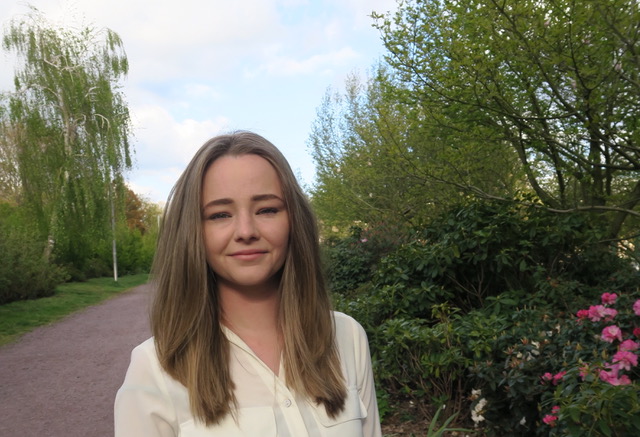In contemporary mental health discourse, anxiety is defined as a tension or panic rooted in a misguided anticipation of danger. There are hundreds variations of anxiety, usually grouped together either by symptom similarity or by the object or event that invokes panic. Crucially, we can only call it anxiety if the fear one feels is irrational. So, if someone is terrified of bridges, we interpret this to mean that they have, over time, built up faulty neuropathways, and now need a treatment like CBT to replace those negative thought patterns with healthier alternatives.
All is well and good. However, we have been writing and thinking about anxiety for hundreds of years, with countless theories that speak to a phenomenological complexity which “faulty wiring” just can’t quite articulate. Take, for instance, Kierkegaard’s definition of anxiety (angst) in 1844. For Kierkegaard, human beings are free in a manner unlike any other creature, and he saw anxiety as the “dizziness of [that] freedom”. Hence, it was seen as less of a symptom and more as the ontological structure of human beings. In the late 1920s, Freud elaborated upon Kierkegaard’s position, arguing that anxiety is at the centre of all psychic functioning, owing (according to Freud) to the helplessness of the infantile position that we all come from.
Lacan elaborated upon Freud’s work, defining anxiety as the “sensation of the desire of the Other”. In this context, ‘Other’ refers to both one’s primary caregiver and that ‘Other’ in our mind which orients our relationship to the world, ourselves, and our fellow creatures. Specifically, for Lacan, anxiety arises when we do not know what we are for the other, which, in our earliest years, is a terrifying position to be in, given how hopelessly dependent we are on them for survival. To understand this, Lacan offers a parable: imagine you are standing in front of a female praying mantis, and you are wearing a praying mantis mask. You know that a female mantis will eat its mate after copulation, so you know that if you are wearing a male mask, this creature gazing upon you intends to eat you. You also know that if you are wearing a female mask, it will leave you alone. However, anxiety is evoked at the moment you realise that you do not know which mask you are wearing. In other words, anxiety “begins from this essential moment when the image is lacking”, such that you do not have the crutch of an image that is ‘you’ in the Other’s eyes. Without that, you do not know what place you have as an object in their desire; you have no bearings, no reference point and thus, no identity.
But I know what others want from me…they literally tell me?
Yes, sure. Your boss might ask you to complete that task before the end of the day, and your friend might ask you to meet up for a coffee. But, for a Lacanian, these interactions are less about what the Other desires from you and more about what it demands from us. For instance, your boss might ask for the task to be completed by the end of the day, but would he like it if you handed it in earlier? Would it make him happy if you addressed him by his second name in the email? Or if you made a funny joke? Your friend might have asked for a coffee, but what would she like to talk about with you? What is she hoping this interaction with you will be? Oftentimes, others don’t even know what they want from you, nor you from them. It is this excessive part of our relationship with others, a desire that is dependent upon an unknowable ‘x’, that is at stake with the Other’s desire in relation to anxiety.
Okay, but what has this got to do with my phobia of sharks?
To reiterate, the idea is that anxiety arises when we do not know what we are for the Other, i.e. we do not have an image of ourselves that we can place in relation to the Other’s desire. That image functions as a crutch which – crucially – creates a distance from the Other’s desire. In other words, if I know what I am for you, I do not need to worry so much about what you might want from me. So, anxiety arises when, in the absence of that image, we are too close to the Other’s desire. Psychoanalytically, then, a phobic object functions as an image to insert as a placeholder and thus creates that distance from the claustrophobic and enigmatic desire of the Other. Treatment, then, would involve creating symbolic underpinnings for that image, so that the questions contained within it can emerge and shuffle around signifying chains.
Okay, so how do we treat anxiety?
From a psychoanalytic perspective, treating anxiety involves re-evaluating our relationship with the desire of the Other (i.e. what we think ‘it’ wants from us or what we think we are not giving ‘it’). This involves speaking to how we perceive ourselves in the eyes of the world, what we believe others expect from us, and how we navigate that dynamic. Crucially, within this process, we create a distance from that desire, which then allows our distinct desire to emerge. The process is – naturally – lengthy and challenging, which is why psychoanalytic encounters typically take significant time, care and attention. However, this is, it seems to me, a far closer to the bone approach to anxiety than aiming to re-wire one’s thinking patterns. I fear that, in that case, even if one’s phobia or anxiety does decrease, that need to create distance from the Other could well kick in once again, and the person might find themselves in a game of whack a mole as far as their phobias are concerned.
Written by Molly Fitz
